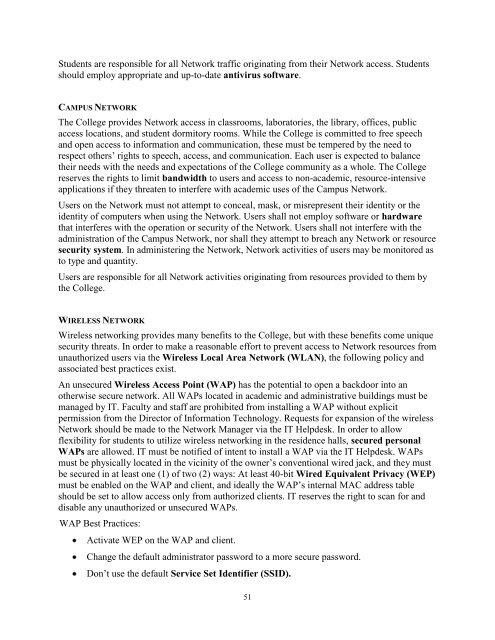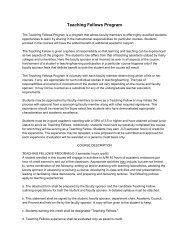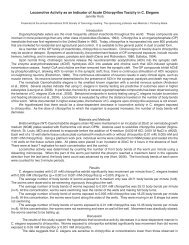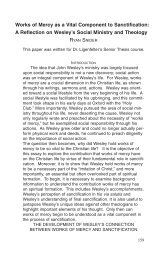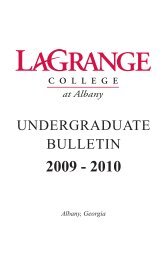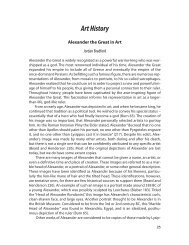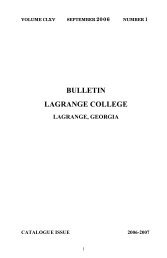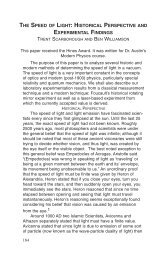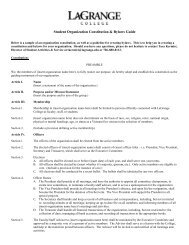undergraduate bulletin - LaGrange College
undergraduate bulletin - LaGrange College
undergraduate bulletin - LaGrange College
You also want an ePaper? Increase the reach of your titles
YUMPU automatically turns print PDFs into web optimized ePapers that Google loves.
Students are responsible for all Network traffic originating from their Network access. Students<br />
should employ appropriate and up-to-date antivirus software.<br />
CAMPUS NETWORK<br />
The <strong>College</strong> provides Network access in classrooms, laboratories, the library, offices, public<br />
access locations, and student dormitory rooms. While the <strong>College</strong> is committed to free speech<br />
and open access to information and communication, these must be tempered by the need to<br />
respect others‘ rights to speech, access, and communication. Each user is expected to balance<br />
their needs with the needs and expectations of the <strong>College</strong> community as a whole. The <strong>College</strong><br />
reserves the rights to limit bandwidth to users and access to non-academic, resource-intensive<br />
applications if they threaten to interfere with academic uses of the Campus Network.<br />
Users on the Network must not attempt to conceal, mask, or misrepresent their identity or the<br />
identity of computers when using the Network. Users shall not employ software or hardware<br />
that interferes with the operation or security of the Network. Users shall not interfere with the<br />
administration of the Campus Network, nor shall they attempt to breach any Network or resource<br />
security system. In administering the Network, Network activities of users may be monitored as<br />
to type and quantity.<br />
Users are responsible for all Network activities originating from resources provided to them by<br />
the <strong>College</strong>.<br />
WIRELESS NETWORK<br />
Wireless networking provides many benefits to the <strong>College</strong>, but with these benefits come unique<br />
security threats. In order to make a reasonable effort to prevent access to Network resources from<br />
unauthorized users via the Wireless Local Area Network (WLAN), the following policy and<br />
associated best practices exist.<br />
An unsecured Wireless Access Point (WAP) has the potential to open a backdoor into an<br />
otherwise secure network. All WAPs located in academic and administrative buildings must be<br />
managed by IT. Faculty and staff are prohibited from installing a WAP without explicit<br />
permission from the Director of Information Technology. Requests for expansion of the wireless<br />
Network should be made to the Network Manager via the IT Helpdesk. In order to allow<br />
flexibility for students to utilize wireless networking in the residence halls, secured personal<br />
WAPs are allowed. IT must be notified of intent to install a WAP via the IT Helpdesk. WAPs<br />
must be physically located in the vicinity of the owner‘s conventional wired jack, and they must<br />
be secured in at least one (1) of two (2) ways: At least 40-bit Wired Equivalent Privacy (WEP)<br />
must be enabled on the WAP and client, and ideally the WAP‘s internal MAC address table<br />
should be set to allow access only from authorized clients. IT reserves the right to scan for and<br />
disable any unauthorized or unsecured WAPs.<br />
WAP Best Practices:<br />
Activate WEP on the WAP and client.<br />
Change the default administrator password to a more secure password.<br />
Don‘t use the default Service Set Identifier (SSID).<br />
51


